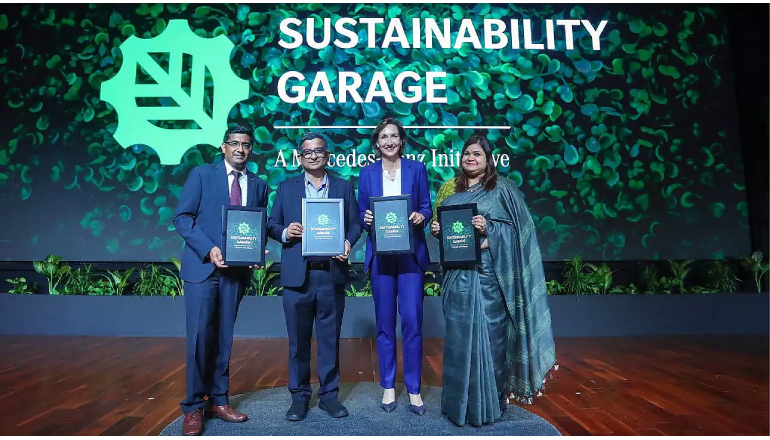The latest Economic Survey finds that India’s GDP grew at a CAGR of 7% from 2005 to 2019, while emissions grew at a CAGR of 4%. This demonstrates the successful decoupling of economic growth from greenhouse gas emissions.
India’s Economic Survey 2023-24 reveals that its annual per capita carbon emission is only one-third of the global average, despite the country being one of the fastest-growing economies in the world.
According to a survey by the International Finance Corporation, India is the only G20 country limiting warming to 2 degrees Celsius, highlighting its focus on climate change mitigation and developmental priorities.
Climate mitigation
The majority of India’s first NDC targets were met well in advance. The country reduced the emission intensity of India’s GDP from 2005 levels by 33% in 2019 and 40% of the country’s installed electrical power capacity came from non-fossil fuel-based energy sources in 2021—nine and eleven years ahead of the target year of 2030, respectively.
As of May 31, 2024, 45.4% of installed electricity generation capacity comes from non-fossil sources, a significant increase from 32% in April 2014.
India’s investment in adaptation-related expenses increased from 3.7% of GDP in 2015-16 to 5.60% in 2021-2022, indicating the integration of climate resilience into development strategies.
Development of Low-Carbon and Energy Security
India’s energy needs are expected to rise by 2.5 times by 2047, necessitating alternative resource demands for climate change resilience and sustainable development.
Challenges for Energy Transition and Way Forward
Expanding renewable energy and clean fuels will increase demand for land and water, according to the Economic Survey, which highlighted several obstacles to India’s development of a low-carbon path. Among all the energy sources, the majority of renewables require land because they are land-intensive. Furthermore, battery storage technologies—which in turn depend on the availability of critical minerals, the sources of which are concentrated geographically—are necessary for the expansion of renewable energy.
The survey highlights the importance of energy efficiency measures in promoting clean energy transitions and energy security. Government initiatives like ECBC, S&L, PAT, Charging Infrastructure, and LIFE aim to reduce energy costs and CO2 emissions, resulting in yearly cost savings of ₹1,94,320 Crore.
Finance for Sustainable Development
According to the survey, the nation has implemented numerous initiatives aimed at enhancing the business climate and increasing the amount of resources available. To raise funds for public sector initiatives that would aid in the efforts to lower the intensity of the economy’s emissions, the government issued sovereign green bonds totaling ₹16,000 Crore in January–February 2023. In October–December 2023, another ₹20,000 Crore was raised through sovereign green bonds.
To promote and expand the nation’s green finance ecosystem, the RBI has also put into effect the Framework for Acceptance of Green Deposits for the Regulated Entities. Additionally, by enforcing its Priority Sector Lending (PSL) regulations, the RBI supports renewable energy.
India’s Pioneering Green Credit Scheme
The Government of India’s Mission Life, which aims to address climate change and promote sustainable living based on conservation and moderation principles, is discussed in the survey. It goes on to say that to support LiFE’s efforts and promote environmentally friendly behaviors, the government also backs voluntary environmental initiatives like the Green Credit Programme (GCP), which provides rewards in the form of green credits to encourage individuals, communities, businesses, and the private sector to engage in environmentally friendly activities.
India is spearheading global efforts to address climate change
The report goes into great detail about how India is spearheading several global efforts to reduce climate change and increase resilience. Among these notable examples are the Infrastructure for Resilient Island States (IRIS), the Leadership Group for Industry Transition (LeadIT), the Coalition for Disaster Resilient Infrastructure (CDRI), the International Solar Alliance (ISA), and One World, One Sun, One Grid (OSOWOG).










